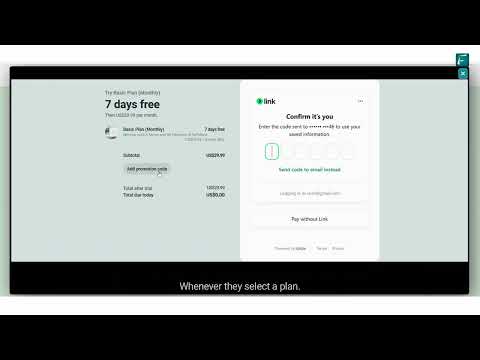Knox County Nebraska Considers Ban on Commercial Wind and Solar Projects: Implications for Rural Energy Development
“Knox County, Nebraska’s decision on wind and solar projects could impact up to 1,140 square miles of potential renewable energy development.”
As we delve into the heart of America’s heartland, a pivotal decision is unfolding that could reshape the landscape of renewable energy projects in Nebraska and set a precedent for rural communities nationwide. Knox County, nestled in the northeast corner of Nebraska, is at the center of a heated debate over the future of commercial wind and solar developments. This controversy highlights the complex interplay between clean energy initiatives, local economics, and the preservation of agricultural heritage.
The Unfolding Debate in Knox County
On a recent Thursday, the Knox County Board of Supervisors took a significant step that has sent ripples through the renewable energy sector. With a decisive 6-1 vote, the board tasked the county planning commission with researching and reviewing a potential ban on new commercial wind and solar energy projects within county borders. This move has ignited discussions about the future of rural energy development and the balance between progress and tradition.
The lone dissenting voice came from District 5 Supervisor Kevin Mackeprang of Bloomfield, Nebraska, who stands in support of renewable energy projects. His stance underscores the division within the community and the challenging decisions that lie ahead for Knox County’s approximately 8,000 residents.

Legal Landscape and Federal Rulings
The board’s decision follows a significant legal development. District 1 Supervisor and Board Vice Chairman Marty O’Connor referenced a recent 40-page memorandum and order issued by Senior U.S. District Judge John Gerrard. This ruling came in response to a federal lawsuit filed against Knox County over wind energy zoning regulations. The plaintiffs in this case include North Fork Wind (NFW) LLC, a subsidiary of National Grid Renewables, and several Knox County landowners who had entered into lease and easement agreements with NFW.
A critical footnote in Judge Gerrard’s ruling caught the attention of county officials. The judge stated, “There’s no mechanism under Nebraska or federal law that prevents Knox County from banning commercial wind farms, so long as there is a conceivably or hypothetically rational reason to do so.” This legal interpretation has emboldened county officials to consider more stringent measures against commercial renewable energy projects.
The Proposed Projects at Stake
Two major renewable energy projects are at the center of this controversy:
- North Fork Wind Project: This industrial wind development, valued at approximately $1.3 billion, would cover over 42,700 acres in Knox County. The project plans include the construction of more than 150 wind turbines, each standing over 600 feet tall.
- Bluestem Energy Solutions’ VRDG LLC Solar Project: This 325-megawatt solar energy project, proposed by Omaha-based Bluestem, would be located about 10 miles west of Verdigre, Nebraska. With an estimated construction cost of $450 million, it would occupy around 1,150 acres of current pasture and row crop land.
These projects represent significant investments in renewable energy infrastructure and could potentially transform the local energy landscape. However, they also raise concerns about land use, environmental impact, and the preservation of Knox County’s agricultural character.
Economic and Environmental Considerations
Supervisor O’Connor highlighted several economic concerns related to the proposed wind project:
- An estimated $390 million in U.S. taxpayer money could be allocated to the commercial wind company for construction.
- This equates to approximately $48,750 of tax savings per Knox County resident.
- When considering the broader U.S. population, each person could be encumbered by at least $330 in new federal debt just for this project.
These financial considerations underscore the complex economic implications of large-scale renewable energy projects in rural areas. While they promise clean energy and potential economic benefits, they also raise questions about the distribution of costs and benefits across local and national populations.
Agricultural and Tourism Impacts
O’Connor emphasized the importance of agriculture and tourism to Knox County’s economy and identity. He argued that both sectors “would be impaired and changed for decades by such a takeover of land belonging to the people of Knox County and the citizens that visit Knox County.” This sentiment reflects a broader concern in rural communities about the potential long-term impacts of large-scale renewable energy projects on traditional land uses and local economies.
For farmers and landowners in Knox County, the debate over renewable energy projects touches on core issues of land stewardship and economic opportunity. While some see lease agreements with energy companies as a way to diversify income, others worry about the long-term impacts on soil health, wildlife, and the rural landscape.
In this context, technologies like those offered by Farmonaut’s crop plantation and forest advisory services could play a crucial role. These satellite-based solutions help farmers monitor crop health and manage resources efficiently, potentially mitigating some concerns about land use changes and agricultural productivity in areas adjacent to renewable energy installations.
The Road Ahead: Public Hearings and Zoning Regulations
The Knox County Planning Commission is now tasked with conducting a thorough review of the potential ban on commercial wind and solar developments. This process will include:
- Scheduling a public hearing, likely for the May 13 meeting in Center, Nebraska
- Taking testimony from the public on both sides of the issue
- Considering the effects on agriculture and recreational land
- Evaluating the health, safety, and welfare implications for Knox County residents
Following this review, the planning commission will make a recommendation to the Board of Supervisors, who will then hold their own public hearing before making a final decision.
“Federal lawsuit rulings and zoning regulations in Knox County, Nebraska, affect the future of clean energy across 8,760 rural communities nationwide.”

Broader Implications for Rural Energy Development
The outcome of Knox County’s deliberations could have far-reaching consequences for renewable energy development in rural areas across the United States. As communities grapple with the transition to cleaner energy sources, they must balance multiple factors:
- Economic opportunities from renewable energy investments
- Preservation of agricultural land and rural character
- Environmental benefits of reducing reliance on fossil fuels
- Local control over land use decisions
- Federal and state energy policies and incentives
This situation in Knox County exemplifies the challenges faced by rural communities as they navigate the complex landscape of renewable energy development. It highlights the need for comprehensive planning that takes into account local concerns while also addressing broader energy and environmental goals.
The Role of Technology in Sustainable Rural Development
As rural communities like Knox County grapple with these complex issues, innovative technologies can play a crucial role in finding balanced solutions. For instance, Farmonaut’s carbon footprinting tools can help agricultural businesses and energy projects alike monitor and reduce their environmental impact. This kind of data-driven approach can inform decision-making and potentially alleviate some concerns about the environmental consequences of large-scale energy projects.
Similarly, fleet management solutions offered by companies like Farmonaut can optimize the logistics of both agricultural operations and renewable energy maintenance, potentially reducing the overall impact on local infrastructure and traffic.
Comparative Analysis: Wind vs. Solar Projects in Knox County
To better understand the potential impacts of different renewable energy projects in Knox County, let’s examine a comparison of wind and solar developments:
| Impact Category | Wind Projects | Solar Projects |
|---|---|---|
| Land Use (estimated acres) | 42,700+ (North Fork Wind Project) | 1,150 (Bluestem VRDG LLC Project) |
| Estimated Job Creation | 200-300 during construction, 20-30 permanent | 150-200 during construction, 10-15 permanent |
| Annual Tax Revenue Projection | $3-5 million | $1-2 million |
| Potential Tourism Impact | Moderate negative (visual impact on landscape) | Low negative (less visible from distance) |
| Agricultural Land Preservation | Moderate impact (turbine placement allows some farming) | High impact (large continuous land area required) |
This comparison illustrates the different scales and impacts of wind and solar projects, highlighting why the decision-making process in Knox County is so complex and consequential.
The Future of Renewable Energy in Rural America
As Knox County deliberates on this crucial issue, it’s clear that the outcome will have implications far beyond its borders. Rural communities across the United States are watching closely, as they too grapple with similar questions about the future of energy production, land use, and economic development.
The debate in Knox County underscores the need for:
- Comprehensive land use planning that balances multiple interests
- Transparent decision-making processes with robust public engagement
- Innovative solutions that can integrate renewable energy with existing agricultural practices
- Careful consideration of long-term environmental and economic impacts
As rural communities navigate these challenges, tools and technologies that provide data-driven insights will be invaluable. For instance, Farmonaut’s crop loan and insurance solutions can help farmers and financial institutions assess and manage risks associated with changing land use patterns and climate conditions.
Conclusion: Charting a Path Forward
The situation in Knox County, Nebraska, serves as a microcosm of the broader challenges facing rural America in the age of renewable energy. As communities strive to balance economic opportunities, environmental stewardship, and preservation of rural character, they must navigate complex legal, economic, and social considerations.
The outcome of Knox County’s deliberations on commercial wind and solar projects will likely set an important precedent for how rural communities approach renewable energy development. It underscores the need for:
- Inclusive and transparent decision-making processes
- Comprehensive impact assessments that consider both short-term and long-term effects
- Innovative approaches to integrating renewable energy with traditional land uses
- Continued research and development of technologies that can support sustainable rural development
As we look to the future, it’s clear that the path to sustainable energy production in rural America will require collaboration, innovation, and a careful balancing of diverse interests. The decisions made in places like Knox County today will shape the landscape of rural energy development for generations to come.
FAQs
- Q: What is the current status of commercial wind and solar projects in Knox County, Nebraska?
A: The Knox County Board of Supervisors has voted to task the planning commission with researching a potential ban on new commercial wind and solar energy projects in the county. - Q: What are the main concerns driving the consideration of this ban?
A: The primary concerns include the impact on agriculture and tourism, land use changes, and the potential economic implications for county residents. - Q: How large are the proposed renewable energy projects in Knox County?
A: The North Fork Wind Project would cover over 42,700 acres and include more than 150 wind turbines. The Bluestem Energy Solutions solar project would occupy about 1,150 acres. - Q: What is the timeline for the decision-making process?
A: The Knox County Planning Commission is expected to hold a public hearing in May, after which they will make a recommendation to the Board of Supervisors for a final decision. - Q: How might this decision affect renewable energy development in other rural areas?
A: The outcome could set a precedent for how other rural communities approach the balance between renewable energy development and traditional land uses.
Earn With Farmonaut: Earn 20% recurring commission with Farmonaut’s affiliate program by sharing your promo code and helping farmers save 10%. Onboard 10 Elite farmers monthly to earn a minimum of $148,000 annually—start now and grow your income!
Learn More About Earning With Farmonaut
Explore Farmonaut’s Solutions
As rural communities navigate the complexities of renewable energy development and sustainable agriculture, Farmonaut offers a range of innovative solutions to support informed decision-making and efficient resource management:
- Farmonaut Web App: Access comprehensive farm management tools and insights.
- Android App: Monitor your farm on-the-go with our mobile application.
- iOS App: Apple users can access Farmonaut’s powerful features on their devices.
- API Access: Integrate Farmonaut’s data and insights into your own systems.
- API Developer Docs: Get detailed information on how to leverage Farmonaut’s API for your projects.
Explore these tools to enhance your agricultural operations and contribute to sustainable rural development.



